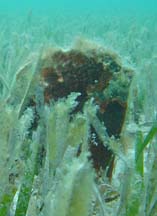Amber Pen Shell (Pinna carnea)
By Cassandra Becker
and
James B. Wood and Abel Valdivia (Eds)
and
James B. Wood and Abel Valdivia (Eds)
|
Amber Pen Shell (Pinna carnea)
By Cassandra Becker
and James B. Wood and Abel Valdivia (Eds) |
